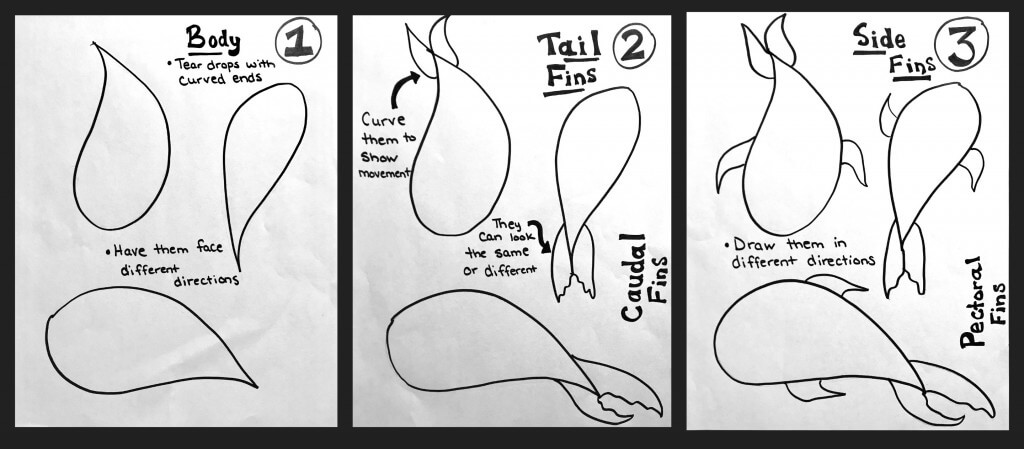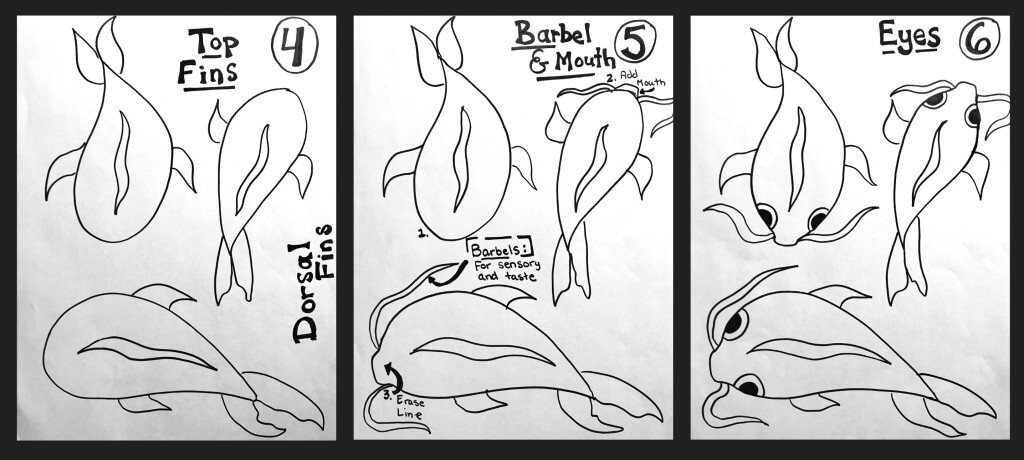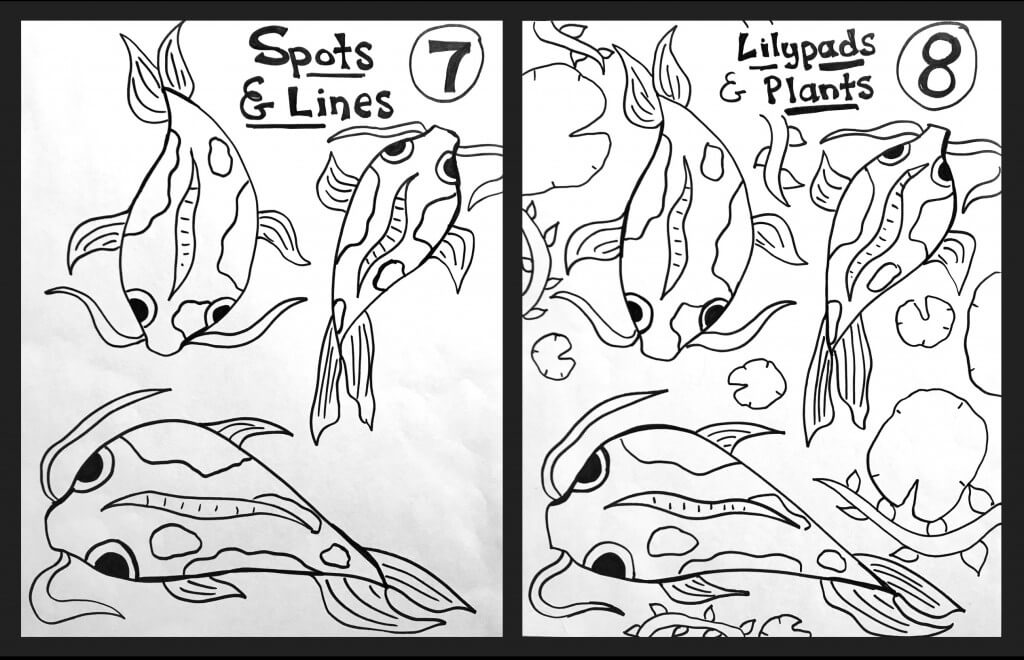Koi Fish Painting
3 Min Read • Arts Integration
Koi fish painting is a perfect link when integrating science, English language arts, and social studies with visual art. The movement that can be captured through line is a wonderful element to render. When we paint with liquid watercolor, there are plenty of opportunities to tie in painting techniques such as salt and wax resist. Drawing from a Bird’s Eye View is a unique perspective to capture a cropped version of a pond with fish swimming into and out of the scene.
Not only are these colorful fish fantastic to capture as artists, but they have a rich history that is documented through legend and symbolism. When designing an arts integration lesson, think of these koi fish and their connection to content areas and standards. You won’t be disappointed.
English Language Arts Connection
Koi fish are legendary and often symbolize attributes such as strength and luck. The Legend of the koi fish and Dragon’s Gate is a tale of perseverance, bravery, and strength. A single koi fish used these attributes to swim up a waterfall against all odds. He was rewarded for this feat and was turned into a dragon. This tale is important to share with students and spreads a wonderful lesson of steadfastness. Check out Dragon’s Gate: An animation by Craig Brown and Beth Armstrong, as well as this one by Jessica Doll.
Science Connection
As an art teacher, I sometimes forget all the ways in which art integrates seamlessly with other content areas. Though I try to integrate as much as possible, I forget about the small things we can do every day to create connections from one subject to another. This could be as simple as the vocabulary we use when describing the subjects we draw or paint.
When drawing our koi fish, it is important to use accurate vocabulary when describing the anatomy of the fish.
Koi Anatomy Vocabulary
- Barbels: The Whiskers near the mouth of the fish
- Dorsal Fin: The back fin of the fish
- Pectoral Fin: The arm fins of the fish
- Caudal Fin: The tail fin of the fish
Social Studies Connection
The history of the koi fish has deep roots in ancient Asian cultures. These popular freshwater ornamental fish have captured the imagination of people for centuries. Because of their legendary nature, symbolism, and color variations, they have been the focus of many works of art and have been a chosen subject of ancient Japanese and Chinese scrolls.
Art Concepts
- Chemical Reaction Painting with Salt
- Wax Resist
- Observational Drawing
- Bird’s Eye View
- Overlapping, proportion, movement and rhythm
- Warm and Cool Color Schemes
Materials
- Thick paper or watercolor paper
- Pencils/Erasers
- Permanent Markers
- Crayons
- Liquid Watercolor Paint
- Paintbrushes
- Iodized Salt
Koi Fish Painting Process
- Practice Drawing a Bird’s Eye View of a koi pond (you can use the steps pictured below).
- Draw a final draft on thicker paper in pencil.
- Outline your pencil drawings with permanent marker and erase your pencil lines.
- Add crayon accents to create the wax resist sections. Do not color anything in fully using the crayon.
- Use the liquid watercolor to paint the water and the fish separately giving them time to dry a little in between tasks. This will cut down on the spreading of color and bleeding from the fish to the water.
- After painting a section, sprinkle some iodized salt on the watercolor and let it dry with your artwork. Do not clear it away.
- When the koi fish painting is completely dry, (the next class period) wipe away the salt leaving a chemical reaction burst from the drying salt.
Open your classrooms to these flashy fish and every legend and historical reference that comes with them. They embody so many powerful lessons for our students and symbolize the best qualities we can bring to any task… perseverance and strength.









